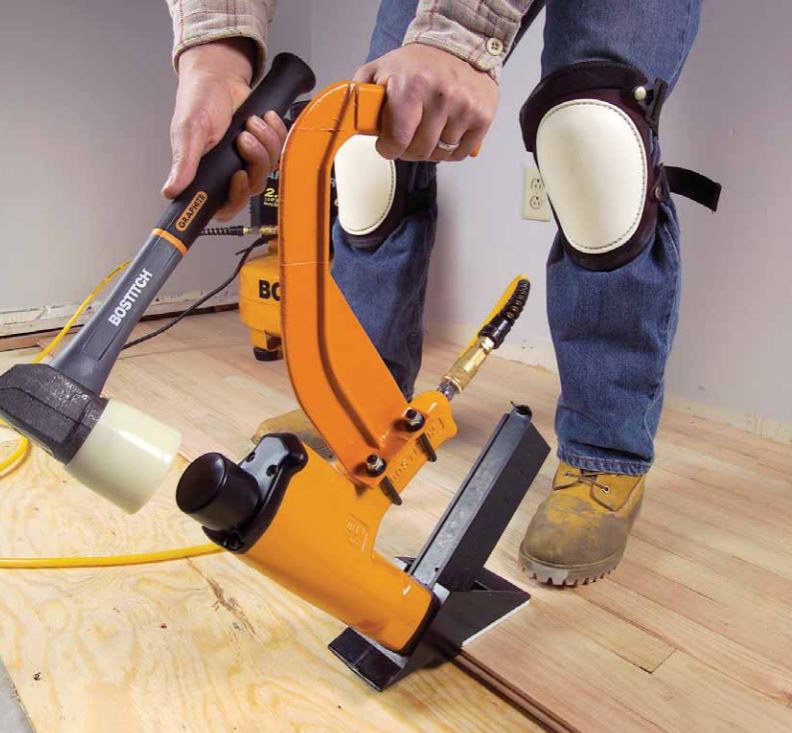Last week we examined the many uses of the floating floor installation in Part 1 of this series. But today let us see the benefits of another install type.
Why is nail-down and staple-down installation the best way to go?
Nailing or stapling down wood floor is the most common and preferred install method for wood floor professionals if a wood subfloor in form of plywood or OSB exists in the house. While installing 3/4” solid hardwood flooring, 2″ long nails or staples should be used. Shorter 1-3/4″ or 1-1/2″ nails might be used for thinner wood flooring like engineered wood floors. Each plank or strip has to be nailed every 8″ and 3″ from both ends of the plank.
The next few paragraphs will explain the benefits of nail down:
First of all, it is a cost effective method which does not involve more than nails or staples and an inexpensive moisture barrier underlayment, such as Aquabar “B” or Silicone Vapor Shield. On the other hand, floating install requires a padded underlayment on which the engineered flooring rests for sound deadening. Furthermore, the glue down method requires a high performance adhesive and correct size trowels and is often associated with increased labor costs.
More importantly, professional installers consider this type of installation as a permanent method. With the correct installation, environment and maintenance, the chances for product failure is consistently low. One other good feature of this method is that a particular damaged board can be replaced by a professional seamlessly to preserve the overall beauty of your floor. In case of your subfloor is not perfectly flat, the installers have to seriously deal with it regardless the method of install. However, if a perfect subfloor is not achievable nailing or stapling down has the most tolerance to subfloor unevenness because the floor boards are forced into place on the subfloor by nails or staples.
The last advantage which is valued highly by professionals but often overlooked is the improved look and feel of having a flush mount transition. Flush-in transitional moldings and vents can be used instead of overlap moldings and drop-in vents. The finished wood floor job can be more appealing to your home compared to floating install.
Even though nail down and staple down installation has many advantages over other types of installation methods, nail down installs require additional tools such as a specialty flooring nail gun, jamb saw, router. Using a proper nail gun or hardwood flooring stapler is essentially important to completing the project successfully. Nail down installation may not be suitable for your home if particle board subfloor, or the wood floor needs be installed over a concrete slab such as in basements or condos. Nail down installation should be seriously considered by home owners and discussed with your potential installation contractors since it has been an approved method in wood floor trade for centuries.
To learn more about floating installation or glue down installation see our other post Part 1 & Part 3.

